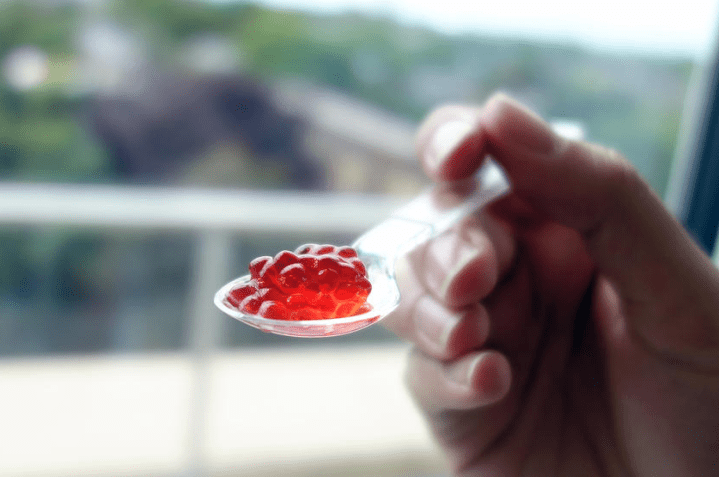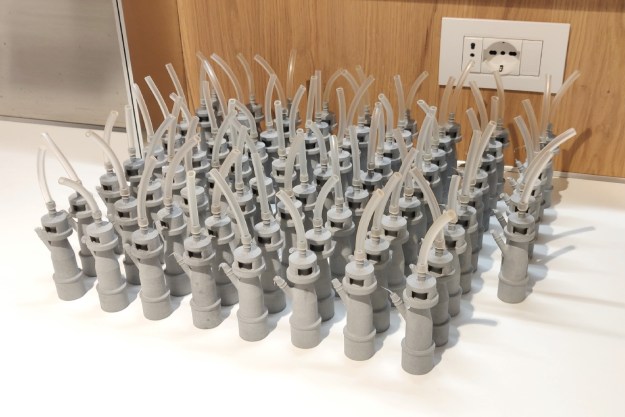
3D printers can pump out a wide variety of different foods these days — everything from candy and chocolates to pizza and pancakes. But now, thanks to the tinkerers at UK-based company Dovetailed, we can add yet another food the list: 3D printed fruit.
Before you get too excited, however, it’s worth noting that the edible material that this contraption pumps out requires a fair stretch of imagination to be considered “fruit,” and the machine itself only loosely fits the definition of what’s traditionally considered a 3D printer. Regardless, it’s still pretty amazing.
Unfortunately, the machine doesn’t actually print real fruit. So you can’t, for example, print out a lifelike apple with the same texture 
Here’s how it works. The machine starts by squirting out a special fruit juice mixture in the same way a normal printer would extrude plastic filament, but rather than pumping it onto a solid baseplate, the juice drips into a cold bath of liquid calcium chloride. This causes the juice –which has been mixed with alginic acid— to start a chemical reaction that produces an edible skin around the ball of liquid. The resulting globules resemble that of caviar or tapioca pearls, but taste like whatever fruit juice they’re made with.
Obviously, this technique can’t produce realistic bananas, peaches, kiwis, and the like, but the globules can be made in virtually any flavor, and could ostensibly even be fortified to provide all the same nutrients you’d get from a real piece of fruit. In the future, the technique could even be tweaked to create more true-to-life shapes, and perhaps even supply printed foods with different textures.
We’re still a few years –perhaps even decades– away from printing real fruit, but at the end of the day, even though these globules aren’t even close to the real thing, they’re still a step in the right direction, and will undoubtedly help lay the groundwork for future food printers.
Find out more here.
Editors' Recommendations
- 3DMakerpro’s Seal is a pocket-sized scanner to make next-gen precision 3D prints
- Need a last-minute Halloween costume? Check out these 3D-printable getups
- Hit takers: The cutting-edge engineering making football helmets safer than ever
- Inside the quest to 3D print a perfectly palatable steak
- Father’s Day Gift Idea: These cheap 3D printers are on sale for less than $300




